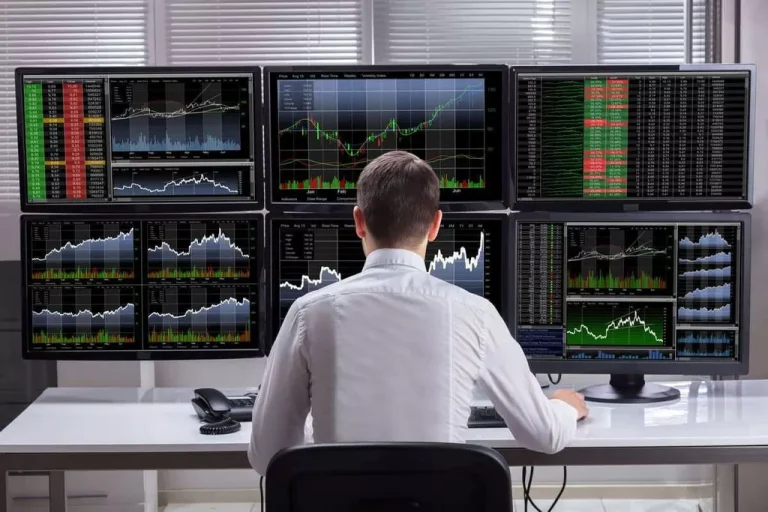Advantages and Disadvantages of ETFs
Content
APs are responsible for ensuring that the ETF’s share price stays close to its net asset value (NAV) by creating or redeeming shares etf liquidity providers when the price of the ETF deviates too much from its NAV. APs also help to ensure that the ETF trades at fair value by buying or selling shares on the secondary market. Liquidity is also important in the creation and redemption of ETF shares. When an investor wants to create or redeem ETF shares, they must do so in large blocks known as creation units. The creation and redemption process involves exchanging a basket of underlying assets for ETF shares or vice versa.
Earn CE credits and strengthen your practice at the same time.
ETFs offer low trading costs compared to mutual funds or individual stocks. ETFs are traded on exchanges like stocks, and investors can Broker buy and sell them through a brokerage account. The brokerage fees for ETFs are lower than mutual funds, which require investors to pay fees to the fund manager. Additionally, ETFs have lower bid-ask spreads than individual stocks, making them more cost-effective to trade.
- Many early ETFs tracked traditional indexes, mostly those weighted by market capitalization.
- If the underlying assets of an ETF are illiquid, it can be difficult or expensive to create or redeem ETF shares.
- From Sectors and Smart Beta to Fixed Income, SPDR Exchange Traded Funds (ETFs) give you wide access to diverse investment opportunities.
- BlackRock shall have no liability for any loss or damage arising out of the use or reliance on the information provided including without limitation, any loss of profit or any other damage, direct or consequential.
Can Ordinary Investors Create and Redeem ETF Shares?
They create market prices, enhance liquidity, and facilitate the seamless execution of leveraged orders for brokers. As ETFs become more popular, it’s essential that investors understand how they work and what role liquidity providers play in the market. Liquidity providers can help educate investors by providing educational resources, such as webinars and whitepapers, and by participating in industry events. By doing so, liquidity providers can help build trust with investors and promote the https://www.xcritical.com/ growth of the ETF market.

ETF Liquidity: What It Is and Why It Matters
So, as traders’ needs expand, brokerages should adapt and extend their offerings. To do so, they need a reliable liquidity provider partner, and below, we’ll go through key criteria that a reliable LP should qualify. As more players enter the market, liquidity providers may struggle to differentiate themselves and maintain profitability. This can lead to a race to the bottom in terms of pricing and service quality. For the most part, these primary and secondary marketplaces for ETF shares work well.
Learn more about planning and maintaining a happy, financially secure retirement. Diversification and asset allocation do not ensure a profit or guarantee against loss. These ratings are not intended to predict how an ETF will perform, but rather to measure how well an ETF is managed in terms of its cost, efficiency, and other factors, versus its peers. The table below explains the different types of orders that can be placed during a trade, how to determine which approach is most appropriate and the potential drawbacks of each. Performance of an ETF means more than just how much money is gained or lost as the ETF’s underlying index rises and falls. If you are unsure about the meaning of any information provided, please consult your financial or other professional adviser.
Primary Market The market where Authorized Participants (APs) create and redeem ETF shares in-kind, typically in blocks of 50,000 shares, which are known as creation units. Liquidity The ability to quickly buy or sell an investment in the market without impacting its price. When it involves danger, a most popular inventory is riskier than a bond but less risky than a standard stock.
Low buying and selling volumes may widen the bid-ask spread, whereas excessive trading volume will slender this unfold. Bid is the worth you may be keen to pay and ask is the worth vendor quotes. Here I look at a few parameters one must remember when selecting such investments. Just as a result of they are passive investments doesn’t imply they are all equivalent and even similar.
This happens during market cycles – liquidity is often poor in bear markets or periods of financial stress. ETF liquidity is an important consideration for investors because it impacts the ability to buy or sell an ETF at a reasonable price. In highly liquid ETFs, sellers can easily sell their shares in an ETF at a price close to the net asset value (NAV) of the ETF. ETF liquidity in smaller ETFs is more complicated, and can be a source of concern for some investors.

A few years ago, most investors hadn’t even heard of bank loans; today, more than $12 billion is invested in bank-loan ETFs. Unlike closed-end index funds, ETFs trade based on supply and demand, and market makers will capture price discrepancy profits. Maximizing the liquidity of an ETF should likely be more important than for a traditional mutual fund or other pooled vehicle. For issuers, this means seeking access to the deepest pools of liquidity.
Here, buying or selling ABC shares would not receive prices as favorable, and trading large amounts could noticeably change the price. Through this simplified example, it’s evident how liquidity impacts the ease of trading and the stability of the market price, highlighting its importance in investment decisions. In early 2008, the SEC granted approval through exemptive relief orders to several fund sponsors to offer fully transparent, actively managed ETFs.
For both retail investors and institutional traders, a reliable liquidity provider ensures smoother transactions, better pricing, and improved trade execution. UpTrader Invest is a comprehensive social trading platform that enables brokers to offer a seamless social trading experience for their clients. It allows users to replicate the trades of top-performing traders across multiple asset classes such as forex, stocks, commodities, and cryptocurrencies, providing flexibility and diversity in trading options. Fixed pricing models guarantee a consistent spread, which can be advantageous when the market experiences volatility. Liquidity providers play a fundamental role in the functioning of CFD markets by providing continuous liquidity, facilitating efficient price discovery, and mitigating trading risks. Market makers and authorized participants are both crucial players in the ETF ecosystem.
It also explains why an ETF‘s liquidity is predominantly determined by the liquidity of its underlying individual securities, rather than by the size of its assets or by trading volumes. Liquidity refers to the ability to buy or sell a security quickly, easily and at a reasonable transaction cost. ETFs and individual stocks both trade on a stock exchange, leading many investors to believe that the factors that determine the liquidity of the two securities must also be similar. This reversal is one of the ways that ETFs allow investors in the secondary market to avoid capital gains taxes on what goes within the fund, unlike a mutual fund. Before investing in any mutual fund or exchange-traded fund, you should consider its investment objectives, risks, charges, and expenses.
Everyone from mom & pop investors looking to save for retirement to mega-sized endowments have turned to the fund type for their portfolio needs. As such, ETFs are quickly becoming the go-to way for advisors and professionals to build model portfolios. The first ETF’s were introduced as passive investments to track a particular Index.
An ETF’s liquidity is affected by the securities that it holds, the trading volume of the securities held, the trading volume of the ETF itself, and the investment environment. Understanding how these factors affect an ETF’s liquidity and, therefore, how its profitability will improve results is especially important in environments where every cent counts. Diversification is one of the key ways in doing so, by spreading investments across different sectors, geographies and asset classes.
For example, some commodity-tracking funds—like funds that track the price of gold, silver, or oil—hold a physical stockpile of that underlying commodity in a vault. One of these approaches isn’t necessarily better or worse than another, but each can come with its own tradeoffs. Passively managed funds invest by sampling the index, holding a range of securities that, in the aggregate, approximates the full Index in terms of key risk factors and other characteristics. This may cause the fund to experience tracking errors relative to performance of the index. Secondary Market The market in which ETF shares or common shares of public companies that currently exist are traded on exchanges between investors.

